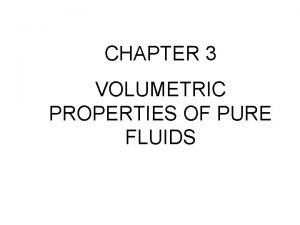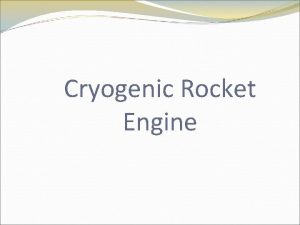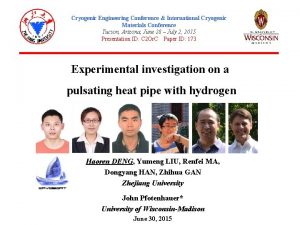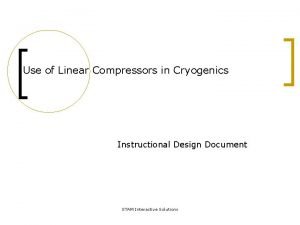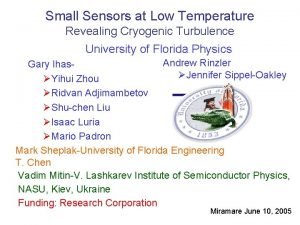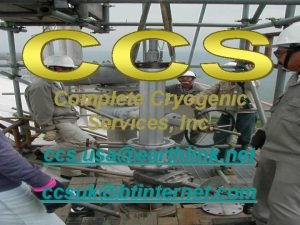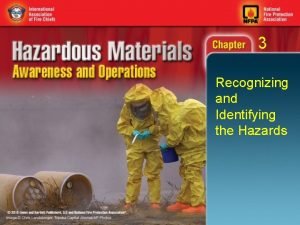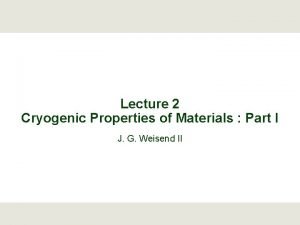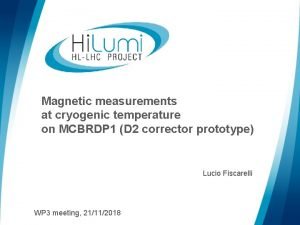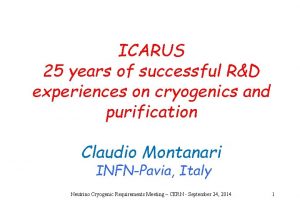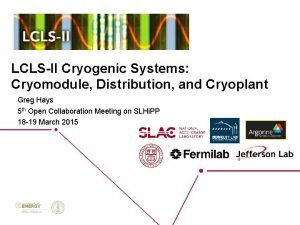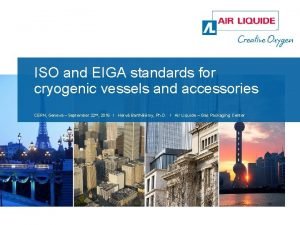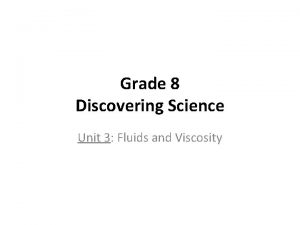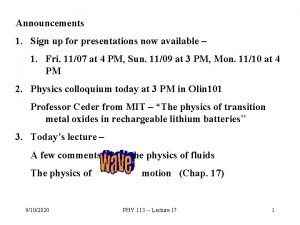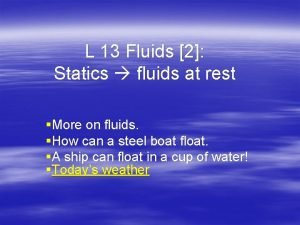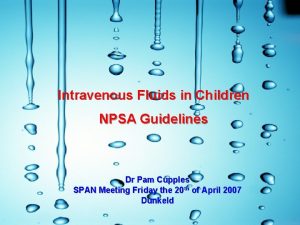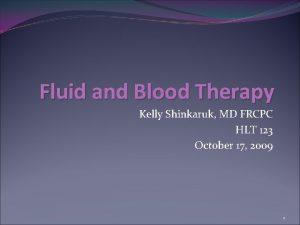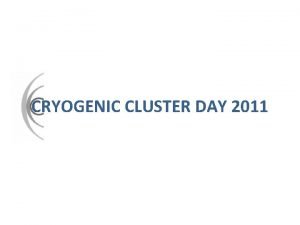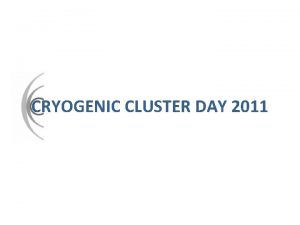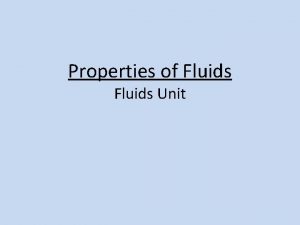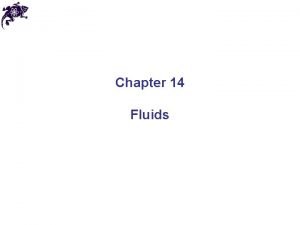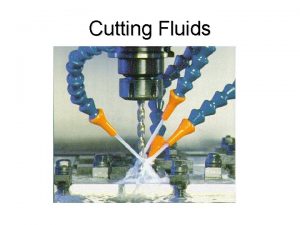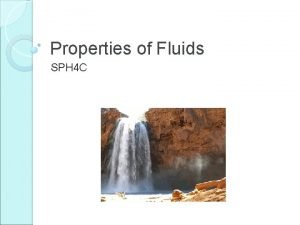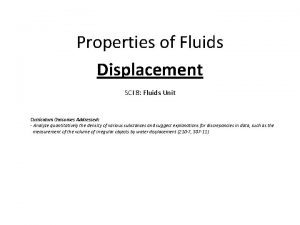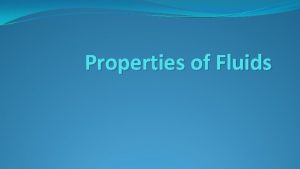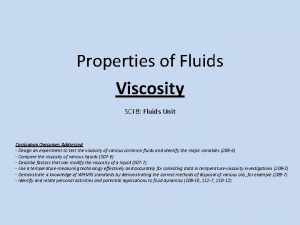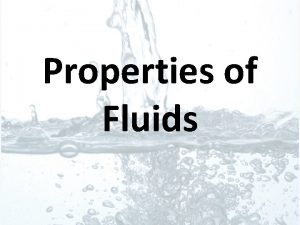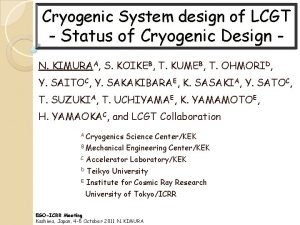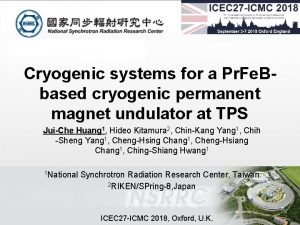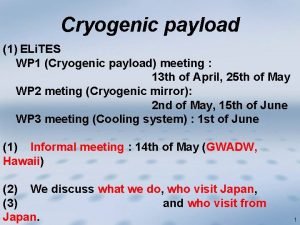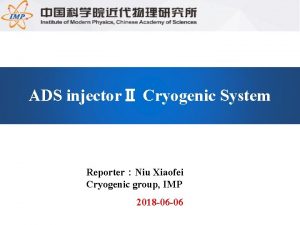Lecture 2 Properties Of Cryogenic Fluids J G




















- Slides: 20

Lecture 2 Properties Of Cryogenic Fluids J. G. Weisend II

Goals • Introduce basic definitions used in describing cryogenic fluids & their properties • Describe important fluid properties and their variation with temperature and pressure • Introduce the law of corresponding states • Describe where fluid properties may be found • Mention unique properties of Hydrogen & Helium (more in later lectures) January 2017 Lecture 2 | Properties of Cryogenic Fluids - J. G. Weisend II Slide 2

Introduction • Due to the wide temperature & pressure ranges covered by cryogenics the properties of fluids vary greatly – we generally can’t assume constant properties. • Understanding changes in thermodynamic state of the fluids allows us to describe refrigeration and liquefaction cycles • With the exception of Helium and Hydrogen, pure cryogenic fluids act as classical Newtonian fluids • Fluid properties are well known (mostly) & many resources exist January 2017 Lecture 2 | Properties of Cryogenic Fluids - J. G. Weisend II Slide 3

Typical Properties Density Specific Heat Enthalpy (h (J / kg)): h = u + Pv Entropy (s ( J / Kg K)): In a reversible process: ds = d. Q/T • Thermal Conductivity • Viscosity • • January 2017 Lecture 2 | Properties of Cryogenic Fluids - J. G. Weisend II Slide 4

Some Definitions • Supercritical Fluid: a fluid that may no longer be thought of as a liquid or a gas but only as a fluid. Such a fluid is either above its critical temperature or critical pressure or both. – The accuracy of calculated thermodynamic values becomes relatively inaccurate around the critical point • Subcooled or Pressurized Liquid: A liquid whose temperature or pressure places it below the saturation curve • Triple Point: The point in thermodynamic space in which the solid, liquid and vapor phases of a substance coexist. • T-S ( temperature – entropy) Diagram: Used to both display graphically fluid properties and frequently to describe refrigeration cycles • Isenthalpic Expansion: changing from high to low pressure along a line of constant enthalpy January 2017 Lecture 2 | Properties of Cryogenic Fluids - J. G. Weisend II Slide 5

Some Definitions • Isentropic Expansion: changing from high to low pressure along a line of constant entropy • 1 st Order Phase Transition: A change in phase in which there is a discontinuity in the specific heat and which requires latent heat • 2 nd Order Phase Transition: No discontinuity in specific heat and no latent heat is required January 2017 Lecture 2 | Properties of Cryogenic Fluids - J. G. Weisend II Slide 6

Some Key Parameters of Cryogenic Fluids Fluid Normal Boiling Point (K) Triple Point (K) Critical Temperature (K) Critical Pressure (k. Pa) Krypton 119. 8 115. 8 209. 4 5496 Methane 111. 6 90. 7 190. 6 4599 Oxygen 90. 2 54. 4 154. 6 5043 Argon 87. 3 83. 8 150. 9 4906 Nitrogen 77. 4 63. 2 126. 3 3399 Neon 27. 1 24. 6 44. 4 2703 Hydrogen 20. 3 13. 8 32. 9 1283. 8 Helium 4. 2 N/A 5. 2 227. 46 January 2017 Lecture 2 | Properties of Cryogenic Fluids - J. G. Weisend II Slide 7

Generic T-S diagram Showing Isenthalps, Isobars and 2 Phase Region January 2017 Lecture 2 | Properties of Cryogenic Fluids - J. G. Weisend II 8

T-S Diagram for Nitrogen January 2017 Lecture 2 | Properties of Cryogenic Fluids - J. G. Weisend II Slide 9

T S Diagram illustrating a Refrigeration Cycle January 2017 Lecture 2 | Properties of Cryogenic Fluids - J. G. Weisend II Slide 10

The Law of Corresponding States • With the exception of helium and hydrogen, the properties of cryogenic fluids can be scaled from one fluid to another with a fair accuracy provided the properties have been normalized (typically by the critical properties of the fluid). • This is useful in looking at the general shape of properties January 2017 Lecture 2 | Properties of Cryogenic Fluids - J. G. Weisend II Slide 11

Normalized Density of Oxygen as a Function of Pressure &Temperature January 2017 Lecture 2 | Properties of Cryogenic Fluids - J. G. Weisend II Slide 12

Cp/R for Oxygen as a Function of Pressure & Temperature January 2017 Lecture 2 | Properties of Cryogenic Fluids - J. G. Weisend II Slide 13

Thermal Conductivity of Oxygen January 2017 Lecture 2 | Properties of Cryogenic Fluids - J. G. Weisend II Slide 14

Equations of State • Allow calculation of all thermodynamic state properties • In theory, are based on the interactions of a molecule with its neighbors • In reality, are highly empirical – A simple example is the ideal gas law: A(r, T) = RT (log r - a log T + S 0 ) • a = 3/2 for a monatomic gas, 5/2 for a diatomic etc. • Best calculated via computer codes January 2017 Lecture 2 | Properties of Cryogenic Fluids - J. G. Weisend II Slide 15

Fluid Property Computer Codes • The use of computer codes to generate properties (based typically on equations of states and empirical data) is the most common way to find fluid properties today • Examples include: – NIST – 12 National Institute for Standards & Technology http: //www. nist. gov/srd/nist 23. cfm – GASPAK & HEPAK from Cryo. Data http: //www. htess. com/software. htm – An interactive website also from NIST should suffice for this class http: //webbook. nist. gov/chemistry/fluid/ January 2017 Lecture 2 | Properties of Cryogenic Fluids - J. G. Weisend II Slide 16

Additional Sources for Cryogenic Fluids Data • “A Reference Guide for Cryogenic Properties of Materials”, Weisend, Flynn, Thompson; SLAC-TN-03023 (Handout and on webpage) – This is a detailed bibliography for cryogenics material properties and includes fluids • Thermodynamic Properties of Cryogenic Fluids, R. Jacobson et al. , • Cryogenic Fluids Databook, British Cryoengineering Society (2002) January 2017 Lecture 2 | Properties of Cryogenic Fluids - J. G. Weisend II Slide 17

Special Case # 1: Hydrogen • Exists in two molecular states: – orthohydrogen – nuclear spins parallel – parahydrogen – nuclear spins antiparallel • At 300 K: 75% ortho and 25 % para • At cryogenic temperatures: parahydrogen is the lowest energy state – Conversion from ortho to para is slow and exothermic • H 2 liquefiers typically include a catalyst (e. g. nickel silicate) to speed up conversion • Thermodynamic properties of ortho and para hydrogen are significantly different January 2017 Lecture 2 | Properties of Cryogenic Fluids - J. G. Weisend II Slide 18

Special Case #2 : Helium Liquid Helium exhibits quantum properties • Requires high pressure for solidification – Why ? – The zero point energy associated with the Heisenberg Uncertainty Principal (DP DX ~ h) for helium at room pressures is greater than the energy required to melt helium. Thus, it won’t solidify. – Roughly 20 Atm of pressure are required. – The fact that Helium remains a liquid all the way down to 0 K has significant technological advantages • Helium has a second liquid phase (He II) – This come about as a result of some of the atoms condensing into the lowest ground state (very similar to Bose-Einstein Condensation) – Is a second order phase transition: thus no latent heat is required – He II (aka superfluid helium) has many unique & useful properties – More information in a later lecture January 2017 Lecture 2 | Properties of Cryogenic Fluids - J. G. Weisend II Slide 19

P-T Diagram for Helium January 2017 Lecture 2 | Properties of Cryogenic Fluids - J. G. Weisend II Slide 20
 Volumetric properties of pure fluids
Volumetric properties of pure fluids Solids liquids and gases section 2 properties of fluids
Solids liquids and gases section 2 properties of fluids Cryogenic engine meaning
Cryogenic engine meaning Cryogenic instrumentation
Cryogenic instrumentation International cryogenic engineering conference
International cryogenic engineering conference Independence cryogenic engineering
Independence cryogenic engineering Cryogenic pressure transducer
Cryogenic pressure transducer Complete cryogenic services
Complete cryogenic services Mc 338 tanker
Mc 338 tanker Cryogenic materials data handbook
Cryogenic materials data handbook Cryogenic temperature
Cryogenic temperature Cryogenic research icarus
Cryogenic research icarus Cryogenic transferlines
Cryogenic transferlines Cold stretching cryogenic vessel
Cold stretching cryogenic vessel 01:640:244 lecture notes - lecture 15: plat, idah, farad
01:640:244 lecture notes - lecture 15: plat, idah, farad Grade 8 science fluids
Grade 8 science fluids Static fluids
Static fluids Fluids at rest
Fluids at rest 4 2 1 rule fluids
4 2 1 rule fluids Colloids iv fluids examples
Colloids iv fluids examples Maintenance fluid formula 4-2-1
Maintenance fluid formula 4-2-1
